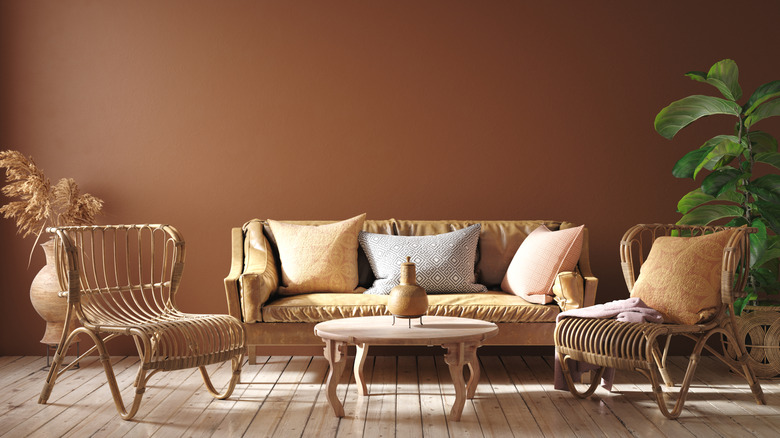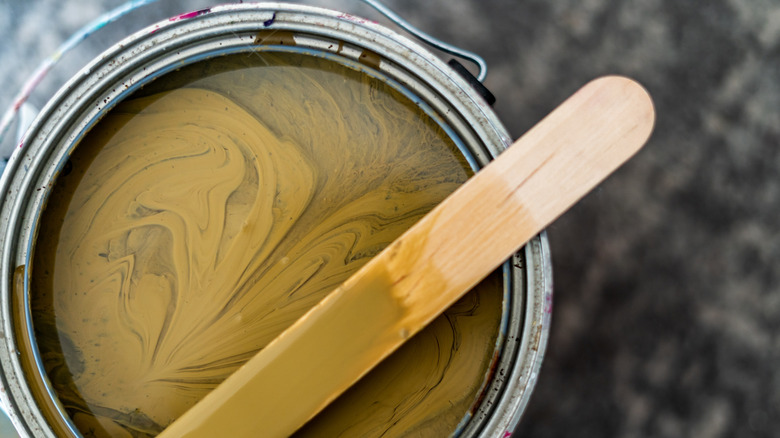How To Easily Make Brown Paint That's Perfect For Your Home's Walls
If you follow design and decor trends, you're probably already aware that brown is back in a big way. Whether in response to years of cool-toned neutrals or a desire to bring more depth and intimacy to our spaces, we have collectively shifted away from grey and back to the warm, grounding color of the earth itself.
Incorporating brown into your home decor begins with getting the color just right. It may be one of the easiest colors to make with other paint shades, consisting of a basic combination of any two contrasting colors — blue and orange, for example. Keep in mind, however, that every combination will give you a different brown. So if the blue and orange version doesn't do it for you, try yellow and purple. Then play with proportions to create your perfect hue. Alternatively, a mix of the three primary colors — red, blue, and yellow — will also get you there. However, if you aren't well versed in paint mixing, you may find it easier to control your mix with two colors than with three.
Once you've got your basic brown, begin adding other colors to get the variation you're looking for. Warm-toned colors like orange will bring some heat to your brown, while blues and greens will result in a cooler shade. Then start mixing in white or black to adjust the shade and tone. Adding white to your color will help you see what your hue actually is, while if you want it to be a bit darker, you can add in some black.
Consider the effect of light on your brown paint
There are additional factors to crafting your perfect, signature brown: specifically, the light. Once you've got the shade you love, put a sample of it up in your room and let the light in your space play over it for a while. Consider the amount of artificial and natural light you have coming into your room throughout the day, and notice the impact it will have.
When you've finally got the shade of brown paint that you'll want to put on your walls, it's time to get enough of it made to actually cover your surface. You can mix the paint yourself, of course, if you've kept good track of your ratios. This process can be fastidious and rather unscientific if you're working with a variety of colors, but it is a great way to save money and use up your old leftover paint from other projects. An easier option is to take your signature color brown to a paint store. They should have the equipment to do an analysis of your sample and create the exact same color in as many gallons of paint as you will need to add cozy charm to your home with the neutral paint shade you created yourself.

